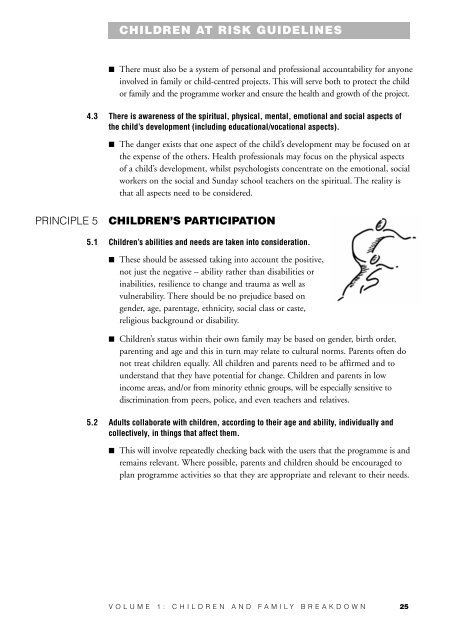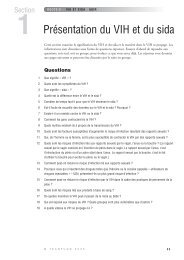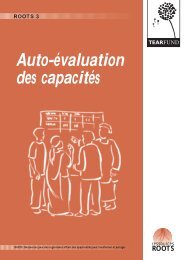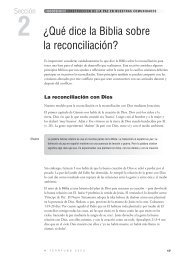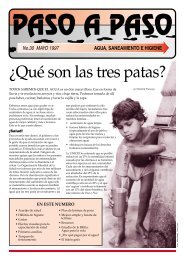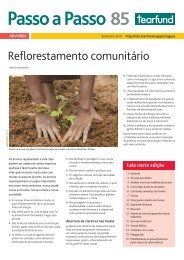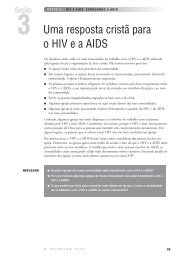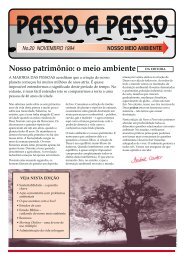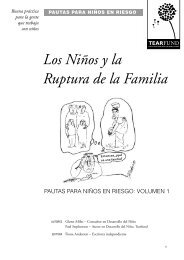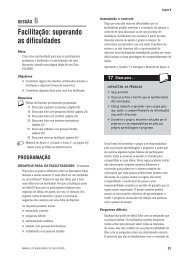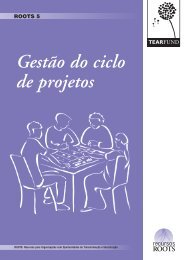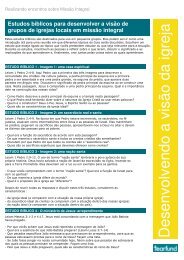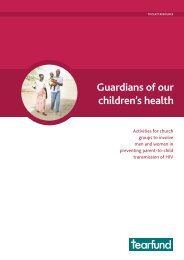Children and Family Breakdown - The Tearfund International ...
Children and Family Breakdown - The Tearfund International ...
Children and Family Breakdown - The Tearfund International ...
Create successful ePaper yourself
Turn your PDF publications into a flip-book with our unique Google optimized e-Paper software.
CHILDREN AT RISK GUIDELINES<br />
■ <strong>The</strong>re must also be a system of personal <strong>and</strong> professional accountability for anyone<br />
involved in family or child-centred projects. This will serve both to protect the child<br />
or family <strong>and</strong> the programme worker <strong>and</strong> ensure the health <strong>and</strong> growth of the project.<br />
4.3 <strong>The</strong>re is awareness of the spiritual, physical, mental, emotional <strong>and</strong> social aspects of<br />
the child’s development (including educational/vocational aspects).<br />
■ <strong>The</strong> danger exists that one aspect of the child’s development may be focused on at<br />
the expense of the others. Health professionals may focus on the physical aspects<br />
of a child’s development, whilst psychologists concentrate on the emotional, social<br />
workers on the social <strong>and</strong> Sunday school teachers on the spiritual. <strong>The</strong> reality is<br />
that all aspects need to be considered.<br />
PRINCIPLE 5 CHILDREN’S PARTICIPATION<br />
5.1 <strong>Children</strong>’s abilities <strong>and</strong> needs are taken into consideration.<br />
■ <strong>The</strong>se should be assessed taking into account the positive,<br />
not just the negative – ability rather than disabilities or<br />
inabilities, resilience to change <strong>and</strong> trauma as well as<br />
vulnerability. <strong>The</strong>re should be no prejudice based on<br />
gender, age, parentage, ethnicity, social class or caste,<br />
religious background or disability.<br />
■ <strong>Children</strong>’s status within their own family may be based on gender, birth order,<br />
parenting <strong>and</strong> age <strong>and</strong> this in turn may relate to cultural norms. Parents often do<br />
not treat children equally. All children <strong>and</strong> parents need to be affirmed <strong>and</strong> to<br />
underst<strong>and</strong> that they have potential for change. <strong>Children</strong> <strong>and</strong> parents in low<br />
income areas, <strong>and</strong>/or from minority ethnic groups, will be especially sensitive to<br />
discrimination from peers, police, <strong>and</strong> even teachers <strong>and</strong> relatives.<br />
5.2 Adults collaborate with children, according to their age <strong>and</strong> ability, individually <strong>and</strong><br />
collectively, in things that affect them.<br />
■ This will involve repeatedly checking back with the users that the programme is <strong>and</strong><br />
remains relevant. Where possible, parents <strong>and</strong> children should be encouraged to<br />
plan programme activities so that they are appropriate <strong>and</strong> relevant to their needs.<br />
VOLUME 1: CHILDREN AND FAMILY BREAKDOWN<br />
25


